Clearing Up Some Misconceptions About In Medias Res
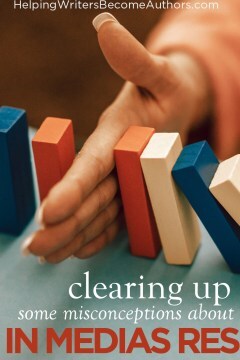 One of the most significant challenges for writers is crafting a beginning chapter that immediately grabs readers. Most commonly, writers are advised to accomplish this via two different methods: the hook and the technique of beginning in medias res, or “in the middle of things.” But are these really two different techniques? And if not, how exactly do they work, either in tandem or separately?
One of the most significant challenges for writers is crafting a beginning chapter that immediately grabs readers. Most commonly, writers are advised to accomplish this via two different methods: the hook and the technique of beginning in medias res, or “in the middle of things.” But are these really two different techniques? And if not, how exactly do they work, either in tandem or separately?
Most readers have limited time and are not interested in reading just anything. These days, many readers make their purchasing decisions based as much on first chapter previews as on book descriptions. This means your first chapter needs to convince potential readers of two things:
1. This is exactly the type of story they’re personally looking for.
2. Your writing is solid enough to promise a good tale throughout.
Quality of writing has much to do with both these factors. If I’m browsing books and I feel the writing style in the first chapter is solid and evocative, I will very likely try it even if it hasn’t given me a gripping hook in the first few pages. My first consideration is always whether or not I will enjoy the writer’s style (because if I don’t, I won’t enjoy putting in the time to appreciate whether the plotting is aces). But good style and a solid hook in the first chapter? That’s gold.
One commonly touted technique for accomplishing this is the use of in medias res. This is a Latin phrase roughly translating “in the middle,” which is generally meant to suggest one of two things to writers:
1. Don’t begin the story before the story’s events (i.e., skip the setup).
2. Do begin with action of some sort (i.e., yeehaw!).
Both bits of advice are solid, but taken by themselves they can also be misleading.
How Can You Use the Technique of In Medias Res in a Three-Act Structure?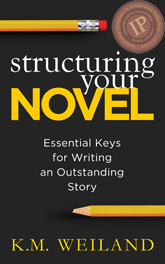
Structuring Your Novel (Amazon affiliate link)
In medias res means beginning “in the middle of the opening scene” with the character already embroiled in that scene’s action.
It does not mean opening “in the middle of the story structure.”
The only exception to this would be the gimmick of the “flashforward,” in which you open with a scene from later in the story, then return to the true beginning of things (as in, for example, It’s a Wonderful Life, which opens at the Third Plot Plot when Clarence the Angel is briefed about his mission to go save George Bailey).

So the short answer to the question of whether or not in medias res is compatible with the Three-Act Structure is that, yes, it totally is. The secret lies in understanding what is meant by the terms and particularly how the First Act functions structurally.
As regular readers of this site will know, the First Act is all about setup. The First Act sets up the main conflict, but this main conflict will not fully initiate until the Second Act. To open your story with events that should properly be in the Second Act will very possibly have the opposite of the desired effect. Readers will have no reason to care about what happens because they have not yet been given an opportunity to care about the characters.
More than that, the events will ultimately lack resonance and perhaps even realism, since the story’s pacing wasn’t constructed to allow these important story ingredients to develop naturally. This doesn’t mean you need to rewind all the way to the beginning of your character’s backstory and start there. But you do want to identify and start at the best structural beginning for your story.
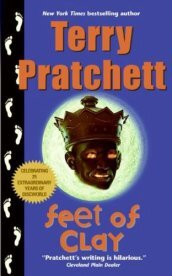
Feet of Clay by Terry Pratchett (affiliate link)
All that said, we do, of course, see stories that seem to open deep within their own action—and, usually, they are action stories. The Bourne Identity and Captain America: Civil War are two examples, as are many mysteries, such as Feet of Clay from Sir Terry Pratchett’s Discworld series.
Stories such as these get right to the point of the conflict with little to no initial character introduction or development. However, an examination of their structural pacing shows that all the parts are still there. Each story has an intact First Act setting up the main conflict, even though the main conflict is not fully engaged with until a bigger event at the First Plot Point.
For Example: The Bourne Identity plunges us (literally) into the main action right away, showing its gunshot protagonist floating in the ocean just as he is rescued by a fishing schooner. However shocking (and hooking) this may be, however, it is not the main conflict. That will not come into view until the amnesiac protagonist realizes someone is after him.

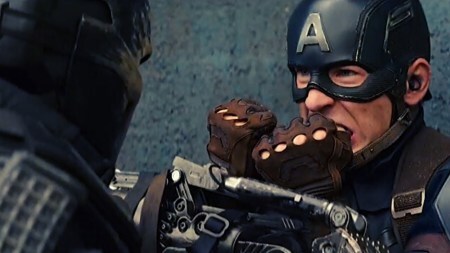
It’s also worth noting that the latter two examples—Civil War and Feet of Clay—are sequels. This means much of the hard work of introducing characters and getting readers to identify with them has already been accomplished in previous installments. Indeed, if you look at The First Avenger, the first movie in the Captain America series, you can see how, after opening with a flashforward, it then spends the rest of its First Act dutifully introducing characters and setting up its main conflict.
What’s the Difference Between the Hook and In Medias Res?I’ve posted about emotional hooks and structural Hooks many times. I’ve also written a little bit about in medias res. This new post came about after I received an email from someone wondering about the difference between the two. If you’re supposed to skip the setup and begin your story smack “in the middle” of the plot conflict, how does that square with the idea of carefully constructed structural timing?
So what’s up here? How can you use in medias res to grab readers in the beginning while still honoring the principles of story structure? For that matter, do you need to bother with in medias res at all?
What Is “the Hook” in Story Structure?First off, what’s the difference between “a hook” and “the Hook”?
Simply put, a hook is anything anywhere in the story that grabs readers’ attention. However, unless otherwise specified, the word usually refers to the first hook in a story, the one that grabs readers on the first page and convinces them to keep reading. In perhaps its simplest definition, a hook piques readers’ curiosity by asking a question, whether explicit or implicit. Something isn’t quite clear, and readers want to know what’s going on.
The Hook (always capitalized) is the term I use to specifically indicate the first beat in a story’s structure. This Hook naturally includes that first “hook,” but it is also the first beat in the story’s plot. It is the first domino in the line of dominoes that will create your story. It is not random. Via the cause and effect of good scene structure, the Hook will affect the scene to follow, setting off a chain reaction—which will create your story.
Your structural Hook will be causally related to the main conflict. However, keep in mind that the First Act is about introducing the characters and the personal dilemmas that lead to the main goal and therefore the main conflict. This means it is totally possible (and usually imperative) to hook readers in the beginning of the story without needing to directly reference the main conflict. What you will do is thematically foreshadow and setup the elements that will come together to create that conflict in the Second Act.
For Example: Iron Man opens not with the main conflict between billionaire arms dealer Tony Stark and his main antagonists—first the terrorists in Afghanistan, then his mentor Obadiah Stane who is funding those terrorists—but simply with a classic Characteristic Moment, in which he blows off the ceremony for some award he just won and goes to play at a casino instead. This doesn’t directly introduce the main plot. What it does do is set up his character—his potential for outside-the-box brilliance, his disregard for the establishment, and his determined irresponsibility. The story hooks us through character, not through plot or action.
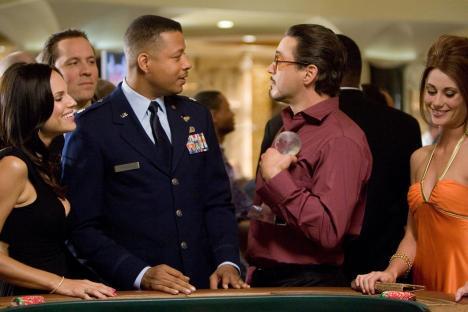

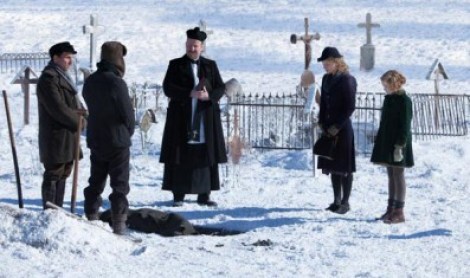
In medias res is the hook technique of opening a story “in the middle of things.” The idea here is to hook readers by plunging them directly into an interesting circumstance. It is one way to cut through any “throat clearing” or “warming up” the author may be doing on the way to finding the best place to begin the story. Rather than starting with a bunch of setup that readers don’t care about, we instead jump right to the good bits.
In some ways, this is always a good idea. Most characters are not interesting enough for their morning routines to properly hook readers. This does not, however, mean you must open with full-on conflict or action. Somewhat counter-intuitively, conflict and action do not necessarily make for the best hook. Until readers are oriented in the story and care about the characters, full-on action or argument can often feel confusing or even (shockingly) boring.
However, it’s almost always best to begin your story with something happening. At the very least, you’ll want to try opening with movement. For example, if your story demands a slower opening with a solitary character, at least get him up and moving. A character pacing in his office is instantly more interesting than one who is sitting at his desk.
Usually, when you see a story that properly begins in medias res, it features the protagonist in the middle of an action-oriented Characteristic Moment, which thematically foreshadows the rest of the story and/or introduces the character’s experience in the First Act’s Normal World. For example, if a character is a spy, she may be introduced in the middle of a mission but not the mission that will comprise the main plot conflict. This technique is also frequently used in sequels, which may open with the character in the middle of a mess left over from the previous story, but which isn’t the structural “middle” of this new story’s conflict.
For Example:You’ll notice none of our three previous examples opens with full-on action or conflict, but they all do open in the middle of things.
Iron Man begins when the awards ceremony Tony Stark skipped is already almost over, while Tony is already collar-deep in enjoying his craps game. More than that, the deal that will send him off to face the true plot conflict in Afghanistan is already underway.

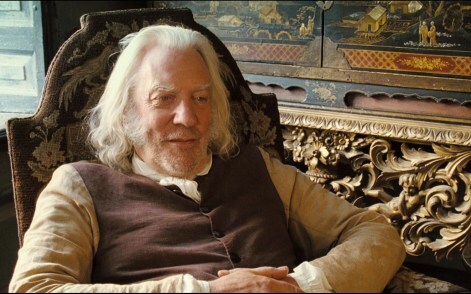
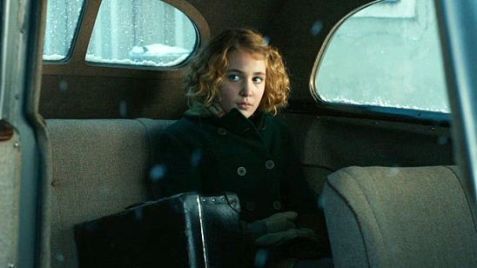
You can see from these three examples that none of them shortchanges the story’s proper structural timing or the First Act’s opportunity to set things up. This means that when the main conflict does arrive (Tony getting kidnapped, Elizabeth meeting Mr. Darcy, World War II starting), readers are already invested in the characters and ready for the importance of the events to come.
***
Full-on in medias res is not a technique you’ll want to use in every book, but when properly understood, it is an extremely valid and useful technique for hooking readers in the first chapter. That is why, next week, we’ll extend this discussion to explore “7 Tips for Opening Your Story In Medias Res.”
Wordplayers, tell me your opinions! How do you feel about using in medias res in your stories? Tell me in the comments!Click the “Play” button to Listen to Audio Version (or subscribe to the Helping Writers Become Authors podcast in Apple Podcast or Amazon Music).
___
Love Helping Writers Become Authors? You can now become a patron. (Huge thanks to those of you who are already part of my Patreon family!)The post Clearing Up Some Misconceptions About In Medias Res appeared first on Helping Writers Become Authors.




